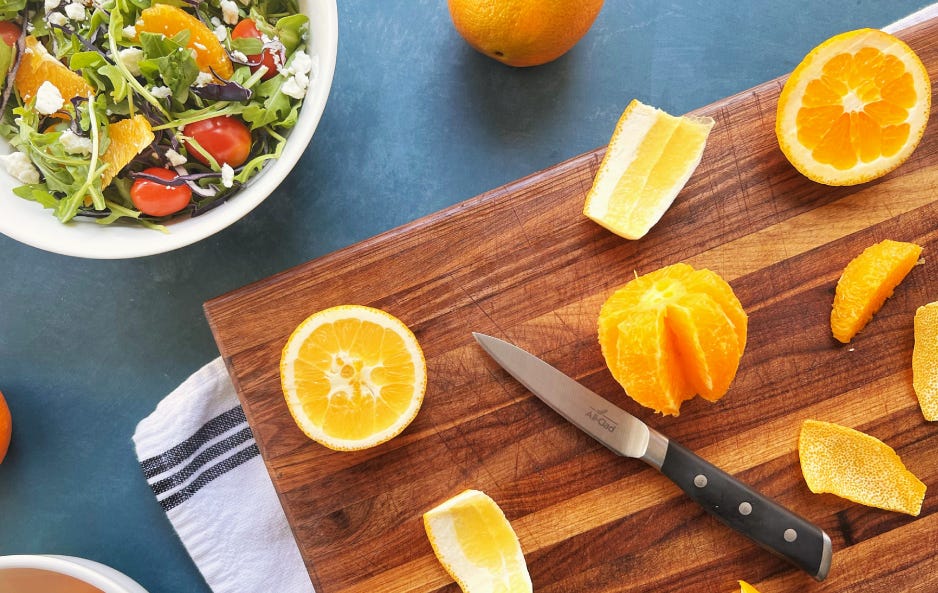The Pith or The Peel

The most concentrated flavor of the citrus comes from the peel - more importantly the zest. The peel of the citrus fruit consists of both the pith and the zest. The pith is the white inner part that is closer to the pulpy interior. The pith can be bitter and including it in a dish can add an unpleasant note to the flavor.
In comparison to the pith, zest adds a purer more intense flavor without the bitterness. The pith can sometimes be peeled away with the zest if you are not careful. As you are zesting, try to remove only the very outermost layer of skin. It is safer to leave a little of the outer layer rather than scrape too deeply and get some of the white parts.
Check out one of our favorite holiday dishes, such as our Cranberry Compote with a Citrus garnish to showcase the zest of the orange to brighten up the tart cranberries.
Chefs today use preserved lemon peels in many dishes to give that intense lemon flavor and aroma. The most common way to preserve the peels is with salt. Salt-preserved lemons are a technique that stretches back centuries. Ancient techniques of food preservation were greatly important before the days of modern refrigeration, particularly in countries with extended periods of hot weather and limited access to fresh produce.
Preserved lemons have a unique flavor that is distinctly citrusy, while their pucker-inducing tartness is greatly reduced. You can add them to braises, fish dishes, sauces, and tagines. They brighten the flavor of many dishes. Check out our Chef Ambassador, Einat Admony, recipe for Spicy Moroccan Fish to see how she uses preserved lemons.
Now that we understand the difference between the Pith vs Peal, this can be used in your next recipe to enhance your dish and add another layer of flavor. Use your All-Clad Forged Paring Knife, to easily remove all of that unappetizing pith from the outer colored part of the fruit. To start cut from top to bottom of the fruit so it can stand up. Take the paring knife and come as close as you can to remove that outer layer. If there is some remaining pith, place the peel flat on your cutting board with your blade using the board as your guide and glide through the peel removing that last layer.
The term supreme, refers to the actual segments of the citrus. After you have removed all of the peel including the pith and zest, you can then easily remove each individual segment of the fruit to add pops of flavor to salads. Ignite your passion to use your citrus to its full potential and create your own amazing dishes.










